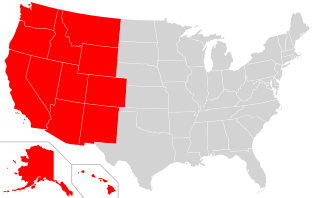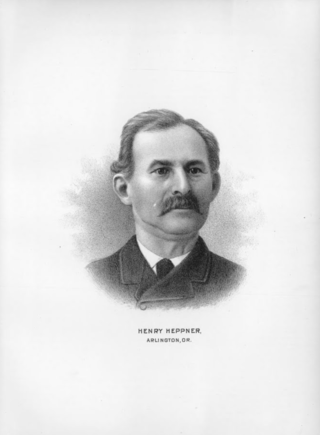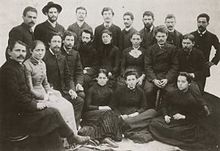
There have been Jewish communities in the United States since colonial times, with individuals living in various cities before the American Revolution. Early Jewish communities were primarily composed of Sephardi immigrants from Brazil, Amsterdam, or England.
The history of Jews in Australia traces the history of Australian Jews from the British settlement of Australia commencing in 1788. Though Europeans had visited Australia before 1788, there is no evidence of any Jewish sailors among the crew. The first Jews known to have come to Australia came as convicts transported to Botany Bay in 1788 aboard the First Fleet that established the first European settlement on the continent, on the site of present-day Sydney.

The history of Jews in Sweden can be traced from the 17th century, when their presence is verified in the baptism records of the Stockholm Cathedral. Several Jewish families were baptised into the Lutheran Church, a requirement for permission to settle in Sweden. In 1681, for example, 28 members of the families of Israel Mandel and Moses Jacob were baptised in the Stockholm German Church in the presence of King Charles XI of Sweden, the dowager queen Hedvig Eleonora of Holstein-Gottorp, and several other high state officials.
New Zealand Jews, whether by culture, ethnicity, or religion, form with Hawaii (8,000–10,000), the joint-second largest (7,500–10,000) Jewish community in Oceania, behind Australia (118,000).
Jewish Texans have been a part of the history of Texas since the first European explorers arrived in the region in the 16th century. In 1990, there were around 108,000 adherents to Judaism in Texas. More recent estimates place the number at around 120,000.
The history of the Jews in Omaha, Nebraska, goes back to the mid-1850s.

Congregation Beth Israel is a Reform Jewish congregation and synagogue, located at 1931 NW Flanders Street, Portland, Oregon, in the United States.

The 19th century saw Jews, like many other people, moving to the American West.
Congregation Ahavath Chesed, also called The Temple Jacksonville, or simply, The Temple, is a Reform Jewish congregation and synagogue located at 8727 San Jose Boulevard, in Jacksonville, Florida, in the United States. It is one of the oldest Jewish congregation in Florida and one of the first formally incorporated.
The history of the Jews in Vancouver in British Columbia, Canada has been noted since the mid-19th century.

Australian Jews, or Jewish Australians, are Jews who are Australian citizens or permanent residents of Australia. In the 2021 census there were 99,956 people whom identified Judaism as their religious affiliation and 29,113 Australians who identified as Jewish by ancestry, an increase from 97,355 and 25,716, respectively, from the 2016 census,. The actual number is almost certainly higher, because being a Jew is not just about being religious, but the census data is based on religious affiliation, so secular Jews often feel it would be inaccurate to answer with "Judaism". Also, since the question is optional, many practicing Holocaust survivors and Haredi Jews are believed to prefer not to disclose their religion in the census. By comparison, the Israeli newspaper Haaretz estimated a Jewish-Australian population of 120,000-150,000, while other estimates based on the death rate in the community estimate the size of the community as 250,000. Based on the census data, Jewish citizens make up about 0.4% of the Australian population. The Jewish community of Australia is composed mostly of Ashkenazi Jews, though there are Jews in Australia from many other traditions and levels of religious observance and participation in the Jewish community.

Ahavath Beth Israel, officially Congregation Ahavath Beth Israel, is a Reform Jewish congregation and synagogue, located at 11 North Latah Street, in Boise, Idaho, in the United States. Its 1896 building is amongst the oldest synagogues in continuous use west of the Mississippi River. The congregation is affiliated with the Union for Reform Judaism.
Harold J. Schnitzer was an American businessman, civic leader, and philanthropist. Schnitzer is best remembered for having made over $80 million in charitable gifts over the course of his lifetime, including the establishment of the Harold Schnitzer Family Program in Judaic Studies at Portland State University in Portland, Oregon and at the University of Oregon.
Jews have been living in Maine, a state in the northeastern United States, for 200 years, with significant Jewish communities in Bangor as early as the 1840s and in Portland since the 1880s. The arrival of Susman Abrams in 1785 was followed by a history of immigration and settlement that parallels the history of Jewish immigration to the United States.
Arlene Schnitzer was an American arts patron and philanthropist. She was the founder and director of the Fountain Gallery, established in Portland to showcase artists in the Pacific Northwest. She is the namesake of the Arlene Schnitzer Concert Hall, a performing arts center in Portland, Oregon.

The Jewish community of Houston, Texas has grown and thrived since the 1800s. As of 2008 Jews lived in many Houston neighborhoods and Meyerland is the center of the Jewish community in the area.

The Jewish community of the Greater Cleveland area comprises a significant ethnoreligious population of the U.S. State of Ohio. It began in 1839 by immigrants from Bavaria and its size has significantly grown in the decades since then. In the early 21st century, Ohio's census data reported over 150,000 Jews, with the Cleveland area being home to more than 50% of this population. As of 2018, Greater Cleveland is the 23rd largest Jewish community in the United States. As of 2023, the Cleveland Jewish Community is estimated to be about 100,000 people.

Henry Heppner was a prominent Jewish-American civil leader and entrepreneur in eastern Oregon. Heppner, Oregon, was named in his honor.

Beth Israel Cemetery is a Jewish cemetery in southwest Portland, Oregon, United States. It has the distinction of being the oldest continually running Jewish cemetery in the country.













